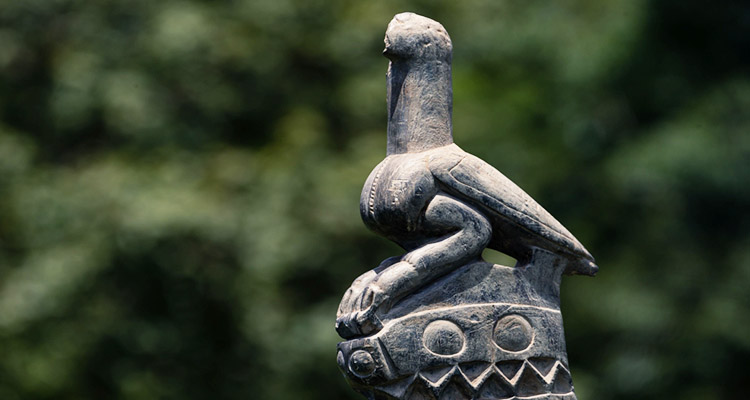The soapstone sculptures were one of the key parts of early Zimbabwean culture. Soapstone birds are especially known, which came to be known as the Zimbabwe birds. It’s not exactly clear what kind of a bird it is, or if it was tied to a religious purpose or not.
 |
| Zimbabwe soapstone birds |
Art changed as the first peoples here came in contact with Europeans during the 19th century. Missionaries charged that local art and traditions were anti-Christian and set out on a mission to destroy it (particularly wooden masks and other carvings). (How can it be anti-Christian when it was created long before they met them?) By the 20th century, their art began to specifically be produced for white tourists. White artists began to make their way to southern Africa to paint and draw its landscape. For a long time, many of the most famous artists from Zimbabwe were white, and black artists of notoriety were relatively few.
 |
| Dance by Kingsley Sambo |
So, here are a few black artists from Zimbabwe you should probably know: Kingsley Sambo (painter, cartoonist), Thomas Mukarobgwa (painter, sculptor), Joseph Ndandarika (sculptor), Dominic Benhura (sculptor), Owen Maseko (visual artist, installation artist), and Tapmufa Gutsa (sculptor).
 |
| The Mudzimu Bull by Joseph Ndandarika |
Literature in Zimbabwe is largely written in English, Shona, or Ndebele, with some other languages being represented as well. There are 16 languages that carry an official status in Zimbabwe. The majority of its early history were oral stories of folklore and local myths and histories that have been passed down from generation to generation.
The first Shona novel to be published was Solomon Mutswairo’s novel Feso (1956), and the first Ndebele novels were published around this time as well. Many themes also incorporated some of the folklore and myths from oral tales but also included issues around colonialism and independence. In the post-Mugabe period, literature became a key way of dealing with the aftermath of such a regime. These novels, short stories, and poems told accounts of where they had come from and served as the rallying cries moving forward in their protests.
Novelists include Shimmer Chinyodya (known for Harvest of Thorns), Chenjerai Hove (known for Bones, Shadows), Farayi Mungoshi (known for Behind the Wall Everywhere), Dambudzo Marechera (known for The House of Hunger), Batsirai Chigama (known for Gather the Children), and Kudakwashe Manjonjo (known for Aluta Continua: The Struggle Continues).
Up next: music and dance



No comments:
Post a Comment